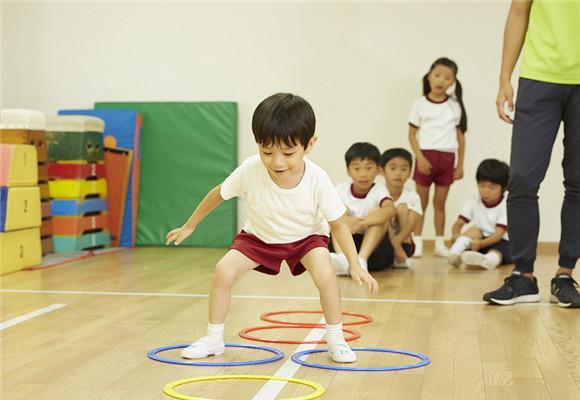"My child is fine, he doesn't need sensory training."
"Sensory training is all deceitful, isn't it sports, in other words, to deceive people!"
……
For the strange and familiar "sensory integration training", Bao Dad and Bao Mom always inadvertently fall into the pit, and the wrong understanding of the sensory system training leads to the failure to carry out or cannot correctly carry out the sensory system training, which is easy to delay the golden period of training. Next, let's talk about the sensory system misunderstanding that those mothers often fall into.

Image source: @Visual China
Myth 1: Sensory system training is only needed by children with problems, and my children are very normal and do not need sensory system training!
No! Sensory integration training is not the exclusive training of special children, but is suitable for every child training.
From time to time, Bao Dad and Bao Mom heard "x children have xx problems, so they went to do sensory integration training", and the sensory integration training at this time is to make up for the child's previous deficiencies; For normal children, sensory system training is carried out in order to achieve the purpose of improving the ability of sensory system and prevent sensory system disorders. Therefore, this sentence does not mean that "sensory system training is equal to the need of children with problems".
And due to the reduction of children's daily activities, limited activity space, excessive protection of parents and other reasons, it is easy to lead to insufficient children's sensory system training, so it is more recommended that ordinary children should also carry out sensory system training as soon as possible.
Myth 2: Children do not need to undergo sensory system training, and it is natural to grow up
Sensory integration is not innate, and the day after tomorrow's training is very important. From an early age, children are trained in sensory integration (not to participate in sensory integration classes in early education institutions, and do sensory integration games at home), which can help children accept the stimulation of environmental information, coordinate children's brain and body through training, and continuously promote the development of his sensory integration ability.
Carrying out sensory integration training from an early age is not the same as letting children attend sensory integration training classes, and parents can integrate sensory integration games into daily parent-child interaction, so that children can get exercise in entertainment, and the effect may be unexpected.
Myth 3: Sensory training is exercise!
Sensory system training and exercise have overlapping similar parts, but the two are not the same thing.
Sport is aimed at consolidating and developing physical fitness. For example: running, high jumping, swimming, etc.; Sensory system training is to improve children's ability to process and integrate sensory information, and to improve children's independence and participation in daily life, play (including social participation) and learning. The form of sensory integration training is more diverse, and it will stimulate multiple senses with the help of sports or games, such as jumping leather bands, hopscotch, scratching, etc. The games played by Bao Dad and Bao Mom when they were young are also one of the sensory unity games.
Myth 4: For sensory integration training, you only need to take the child to the early education institution and hand it over to the teacher.
Sensory integration training cannot be completed in the classroom alone. Sensory system training is not only carried out in early education institutions, rehabilitation institutions, etc., but also at home training is also a very important part. The short 1-hour class allows the teacher to understand the child's situation and provide more professional advice, but it is not the whole of sensory integration training. But this 1 hour allows parents to experience the main points of sensory integration training, so that you can train with your children at home.
Sensory integration training is inseparable from the participation of Bao Dad and Bao Mom. Parent-child communication in the training process is actually a driving force to encourage children to gradually progress. Therefore, even if you take your child out for sensory integration training, don't plan to be a hand-shaking treasurer, pay more attention to the details of the teacher in the classroom, go home to find time to play the sensory system game with the child, cultivate parent-child feelings, and introduce the sensory system game as a daily parent-child game.
Finally, I would like to remind My Mother that sensory training is not a single, mechanical training, but a training that can be carried out with the help of games. Integrating sensory integration games into parent-child games can actually achieve the purpose of sensory integration training. Try to learn from the video of the sensory system game on the Internet, and you will find that the sensory system is actually a very interesting world.